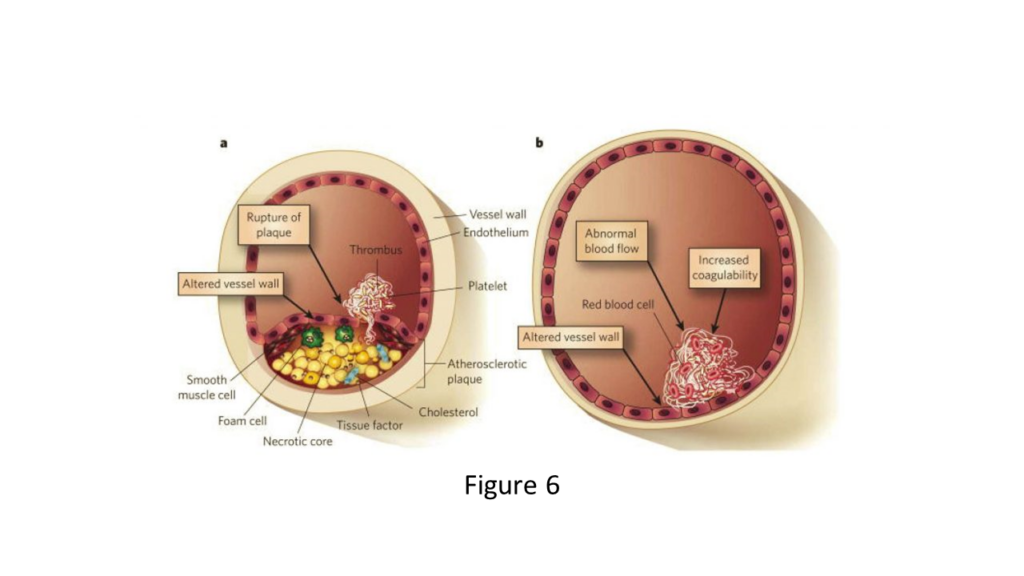Arterial and Venous Thrombosis
Arterial and venous clots both contain platelets and fibrin but arterial clots contain higher amounts of platelets whereas venous clots have higher amounts of fibrin (Figure 6). Traditionally, antiplatelet drugs are used to prevent arterial thrombosis, which is often caused by rupture or erosion of atherosclerosis, and anticoagulant drugs are used to treat and prevent VTE. However, recent studies showed that recurrent VTE could be reduced by the antiplatelet drug aspirin, although it was not as effective as an anti-FXa drug. Patients with cardiovascular disease are typically treated with antiplatelet drugs to reduce myocardial infarction and stroke. One study showed that addition of an anti-FXa drug called rivaroxaban to antiplatelet therapy reduced cardiovascular events in acute coronary syndrome (ACS) patients, although there was an increase in hemorrhage. This led to the approval for rivaroxaban for ACS patients in Europe but not the US. Recently, it was shown that addition of rivaroxaban to aspirin reduced cardiovascular events in patients with stable carotid artery disease and peripheral artery disease. These studies suggest that in the future combinations of antiplatelet and anticoagulant drugs could be used to reduce both arterial and venous thrombosis.
